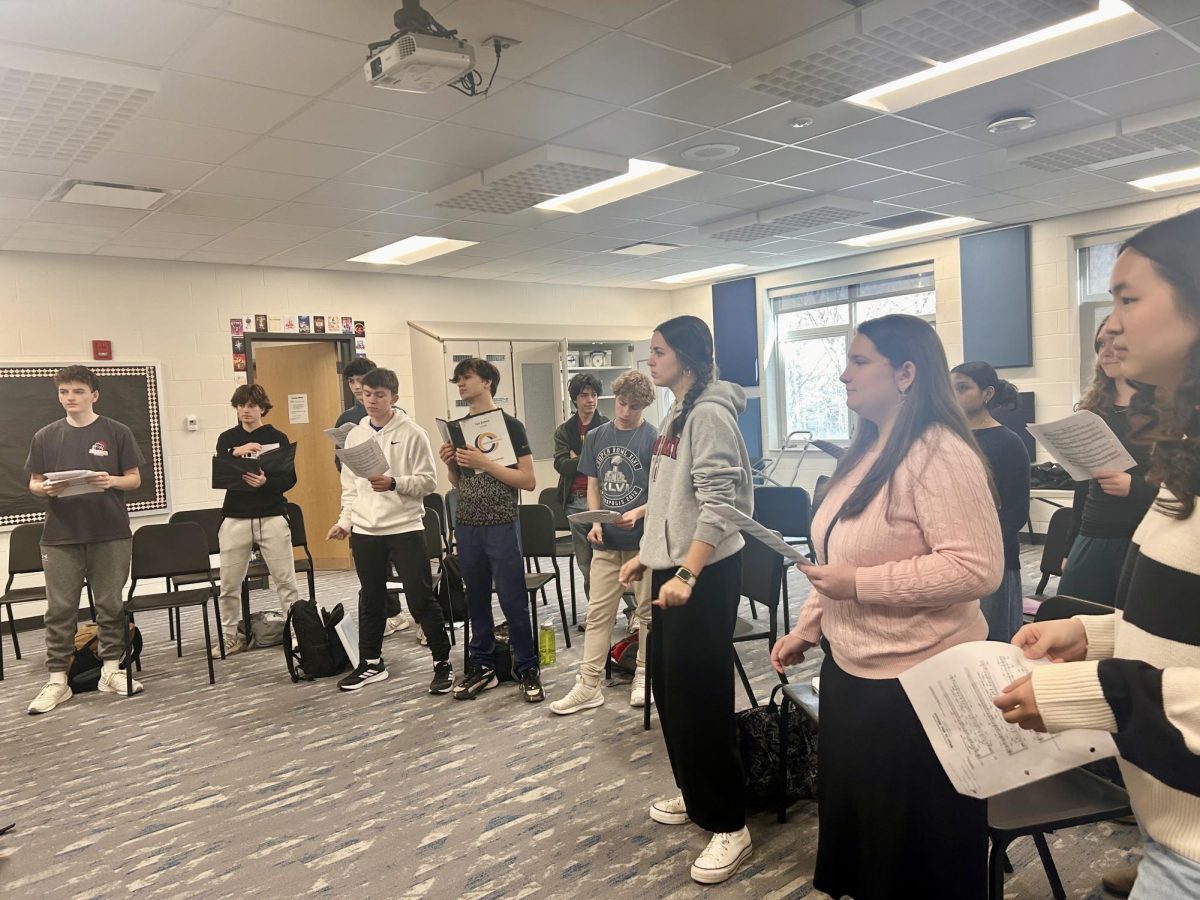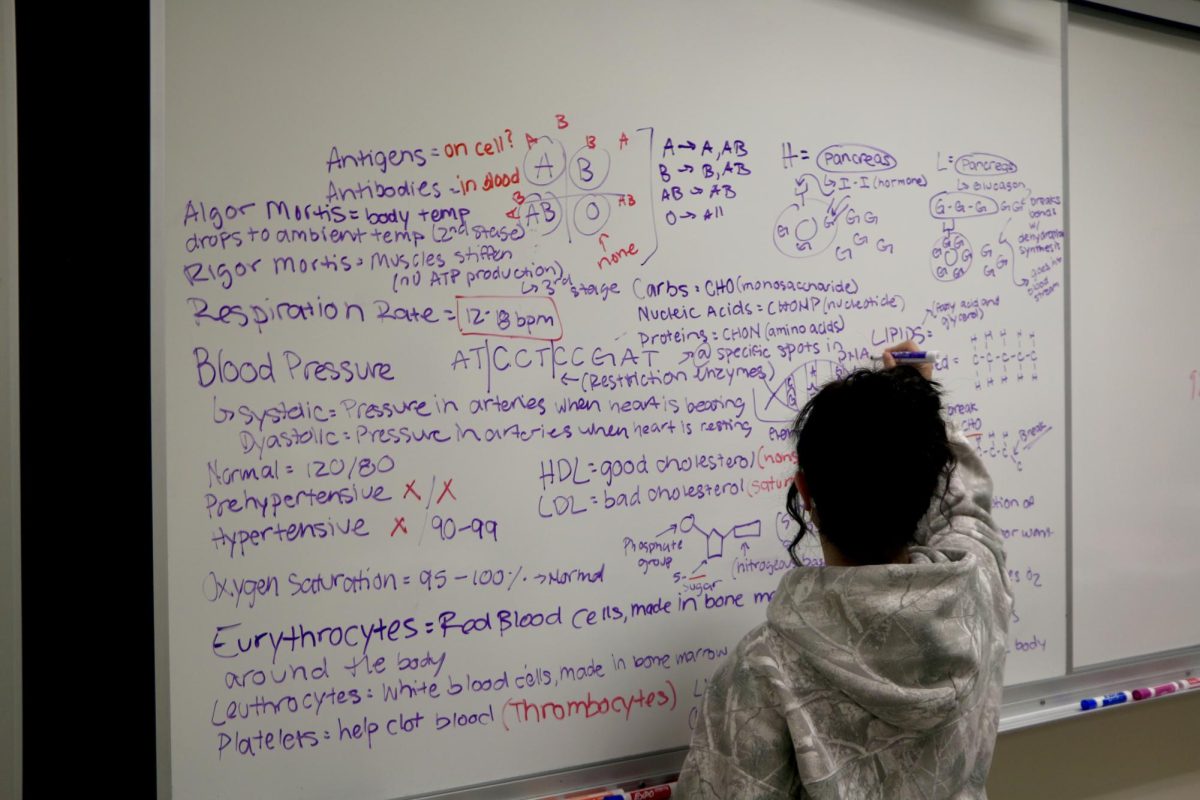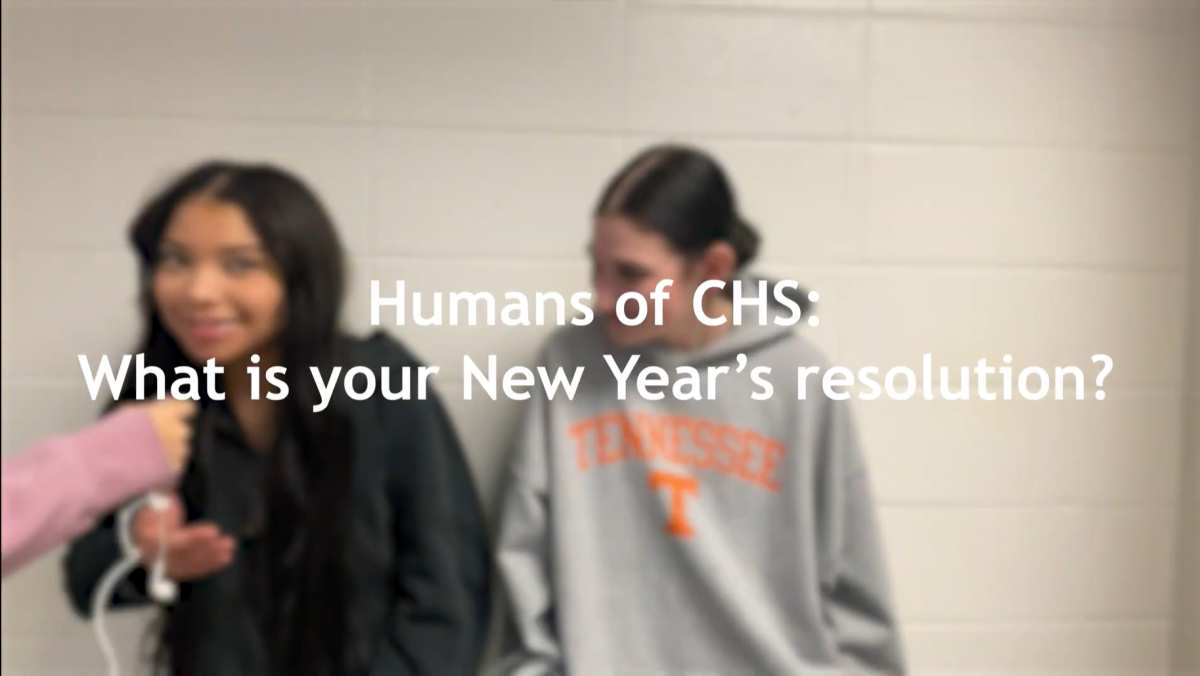One day in late July, senior Chloe Keller was driving alone in her car, unaware of any danger that lurked ahead. She approached the intersection of 111th and Cornell Street, proceeding through it at the signal of the green light. At the same time, a distracted delivery man came upon the intersection from the opposite direction, turning left without looking up to check for oncoming traffic. Keller pressed her hand over her horn to honk but it was too late. The delivery truck collided with Keller’s car and in a split-second the car was totalled.
Keller, still in shock, fumbled for her phone but couldn’t find it because it had fallen during the crash. Seemingly on cue, police and fire trucks arrived and she was taken out of the car, miraculously only suffering injuries to her wrist and fingers.
“I just remember panicking and the scene just replaying in my head; like I could remember it exactly,” Keller said.
Keller’s story, despite its disturbing nature, is not an uncommon one. In the first half of 2015, a steady trend revealed that traffic accidents involving injuries were up 33 percent in the United States according to the National Safety Council. And in a statistic that hits even closer to home, the Indiana University Public Policy Institute found that in 2014, young (15- to 20-year-old) Indiana drivers’ overall involvement in collisions increased by 1.5 percent and involvement in incapacitating injury collisions increased substantially by 54.5 percent.
Additionally, Indiana lawmakers are seeking to keep young Indiana drivers safer with new rules. In July, more driving restrictions came out including a ban on driving from 11 p.m. to 5 a.m. on Sunday through Thursday, and 1 to 5 a.m. on Fridays and Saturdays. Also, the ban on use of electronic devices at any time while driving was extended to 21 and younger. These laws and the laws that came before them have some students skeptical about the effectiveness of certain laws, but also supportive of the ban on electronic devices.
Erika Helding, junior and recently licensed driver, shared her opinion on the new laws.
“I think that the new laws are there to protect drivers and personally I think they make me feel more safe, because I’m a very inexperienced driver and so it makes me feel safer to know that there are a lot of laws in place to prevent people from being bad drivers,” Helding said.
Officer D. J. Schoeff, CHS school resource officer and a regular witness to teen tendencies, had a similar viewpoint.
“Anytime we have a new function in our lives, setting appropriate boundaries and guidelines around those functions is always beneficial,” Schoeff said. “Sometimes it’s challenging for us because we don’t want to have those boundaries and those guidelines.”
While the new laws passed in July may be unfamiliar to some, the laws that were in place before July are well known to most teens. In 2009, the Graduated Drivers Licensing (GDL) came into effect in Indiana requiring 50 hours of practice with supervision and the teen being 16 and a half to be eligible for a license. The law also limits passengers to family members for the first six months of driving with a license.
Helding said she was ambivalent whether the laws helped save lives.
“You’re allowed to have siblings in your car, but you’re not allowed to have friends in your car. My sister is 13 and we’re pretty close friends, so if I were to drive her, I feel like it would be the same as having a friend in my car with me,” Helding said.
Keller also expressed her opinions over the law’s restriction on who teens drive after they get their licenses.
“It’s kind of annoying that you can’t drive with someone for six months. I don’t know, I don’t really feel like that helps,” Keller said.
The mobile device laws, on the flip side, are laws that both Helding and Keller said they agree with.
“I feel like we live in a generation where everything is just so fast-paced,” Helding said
“Everyone is always multitasking and doing a lot of things at one time. I think people just need to focus on driving more and not a bunch of other things.”
Keller added that any distraction, whether it be texting or looking up an address for a delivery, should wait until the driver is not behind the wheel. Schoeff said that the laws that are put into place are not made to be a pain in neck, but to guide people to live more safely. He also added that driving, in the state of Indiana is a privilege, not a right, so it can be taken away.
“It really, truly is a matter of setting the right parameters, so that people can live within those parameters and be very well skilled and very well trained to operate that car before they get to 21 years old,” Schoeff said, “That’s when you’d like to think our decisions would get a little bit better.”
That said, both Keller and Schoeff noted that adults are just as preoccupied with their devices as teens. Schoeff said it wouldn’t surprise him if, down the road, there are more laws put into place restricting electronics use for all ages.
Even with all the new restrictions, Keller, after having been a victim of a crash said, “Don’t expect everyone to be following the rules of driving just because you are.”































![AI in films like "The Brutalist" is convenient, but shouldn’t take priority [opinion]](https://hilite.org/wp-content/uploads/2025/02/catherine-cover-1200x471.jpg)













































![Review: “The Immortal Soul Salvage Yard:” A criminally underrated poetry collection [MUSE]](https://hilite.org/wp-content/uploads/2025/03/71cju6TvqmL._AC_UF10001000_QL80_.jpg)
![Review: "Dog Man" is Unapologetically Chaotic [MUSE]](https://hilite.org/wp-content/uploads/2025/03/dogman-1200x700.jpg)
![Review: "Ne Zha 2": The WeChat family reunion I didn’t know I needed [MUSE]](https://hilite.org/wp-content/uploads/2025/03/unnamed-4.png)
![Review in Print: Maripaz Villar brings a delightfully unique style to the world of WEBTOON [MUSE]](https://hilite.org/wp-content/uploads/2023/12/maripazcover-1200x960.jpg)
![Review: “The Sword of Kaigen” is a masterpiece [MUSE]](https://hilite.org/wp-content/uploads/2023/11/Screenshot-2023-11-26-201051.png)
![Review: Gateron Oil Kings, great linear switches, okay price [MUSE]](https://hilite.org/wp-content/uploads/2023/11/Screenshot-2023-11-26-200553.png)
![Review: “A Haunting in Venice” is a significant improvement from other Agatha Christie adaptations [MUSE]](https://hilite.org/wp-content/uploads/2023/11/e7ee2938a6d422669771bce6d8088521.jpg)
![Review: A Thanksgiving story from elementary school, still just as interesting [MUSE]](https://hilite.org/wp-content/uploads/2023/11/Screenshot-2023-11-26-195514-987x1200.png)
![Review: "When I Fly Towards You", cute, uplifting youth drama [MUSE]](https://hilite.org/wp-content/uploads/2023/09/When-I-Fly-Towards-You-Chinese-drama.png)
![Postcards from Muse: Hawaii Travel Diary [MUSE]](https://hilite.org/wp-content/uploads/2023/09/My-project-1-1200x1200.jpg)
![Review: "Ladybug & Cat Noir: The Movie," departure from original show [MUSE]](https://hilite.org/wp-content/uploads/2023/09/Ladybug__Cat_Noir_-_The_Movie_poster.jpg)
![Review in Print: "Hidden Love" is the cute, uplifting drama everyone needs [MUSE]](https://hilite.org/wp-content/uploads/2023/09/hiddenlovecover-e1693597208225-1030x1200.png)
![Review in Print: "Heartstopper" is the heartwarming queer romance we all need [MUSE]](https://hilite.org/wp-content/uploads/2023/08/museheartstoppercover-1200x654.png)


